In following figs. Variation of volume by change of pressure is shown in Fig. A gas is taken along the path ABCDA. The change in internal energy of the tgas will be:
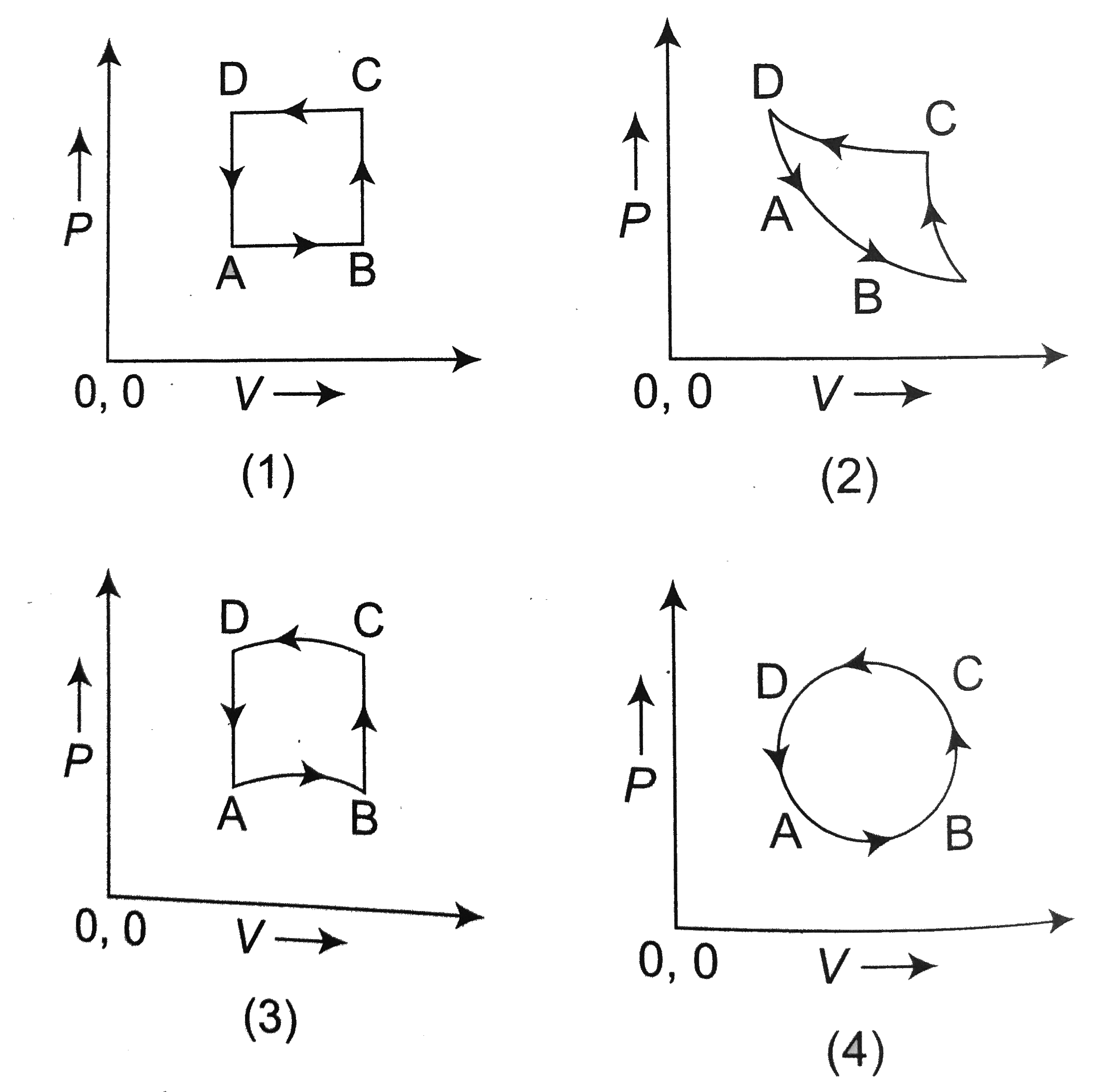 Solution in Punjabi
Solution in Punjabi
Positive in all the cases (1) to (4)
Positive in cases (1), (2), (3) but zero in case (4)
Negative in cases (1), (2), (3) but zero in case (4)
Zero in all the cases
The correct Answer is:D
Zero
Internal energy is state function.
Topper's Solved these Questions
- BOOK - NARENDRA AWASTHICHAPTER - THERMODYNAMICSEXERCISE - Level 3 - One Or More Answers Are Correct1videos
THERMODYNAMICS
- BOOK - NARENDRA AWASTHICHAPTER - THERMODYNAMICSEXERCISE - Level 3 - Match The Column2videos
THERMODYNAMICS
- BOOK - NARENDRA AWASTHICHAPTER - THERMODYNAMICSEXERCISE - Level 2 (Q.1 To Q.30)1videos
THERMODYNAMICS
- BOOK - NARENDRA AWASTHICHAPTER - STOICHIOMETRYEXERCISE - Level 3 - Subjective Problems20videos
STOICHIOMETRY
Similar Questions
Assume ideal gas behaviour for all the gases considered and neglect vibrational degrees of freedom. Separate equimolar sample. Separate equimolar samples of Ne, O2 , CO2 and SO2 were subjected to a two process as mentioned. Initially all are at same state of temperature and pressue.
Step I → All undergo reversible adiabatic expansion to attain same final volume, which is double the original volume thereby causing the decreases in their temperature.
Step → After step I all are given appropriate amount of heat isochorically to restore the original temperature.
Mark the correct option(s) :02:48View SolutionMatch the following columns
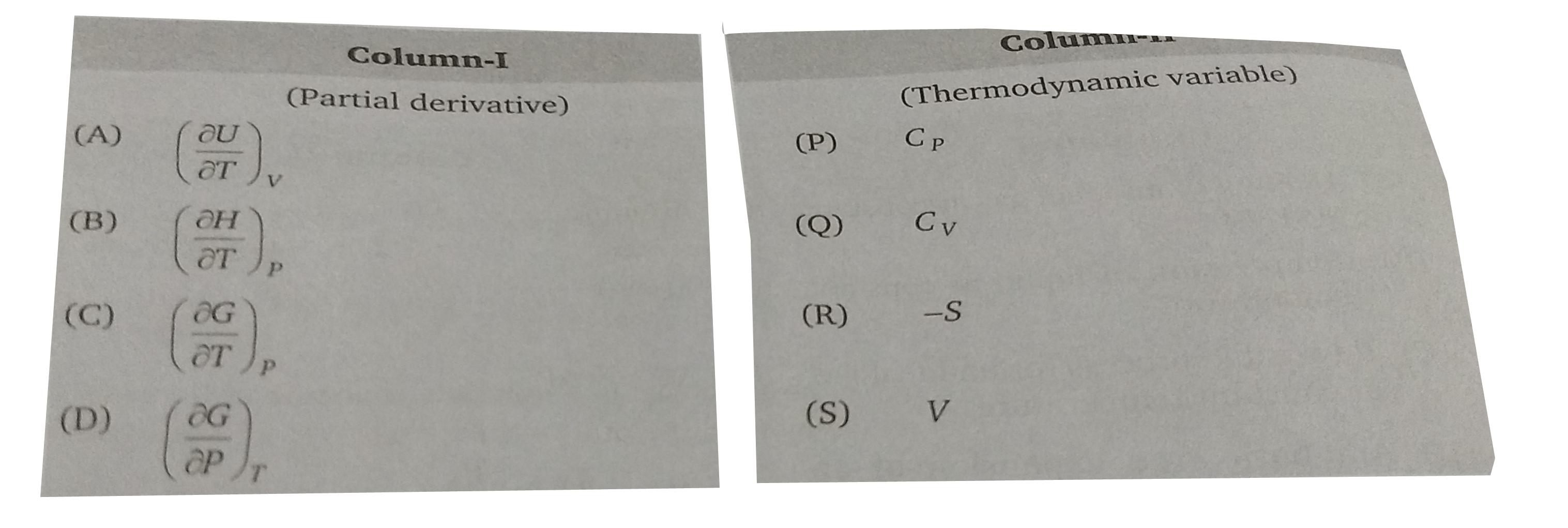 04:23View Solution
04:23View SolutionWrite structure of 2,2-dimethylheptane.
02:23View SolutionWhat volume of a liquid (in L) will contain 10 mole ? If molar mass of liquid is 280 and its density is 1.4 g/mL.
02:27View SolutionA gas is taken along the path AB as shown in , if 70 cal of heat is extracted from the gas in the process, calculate the change in the internal energy of the system.
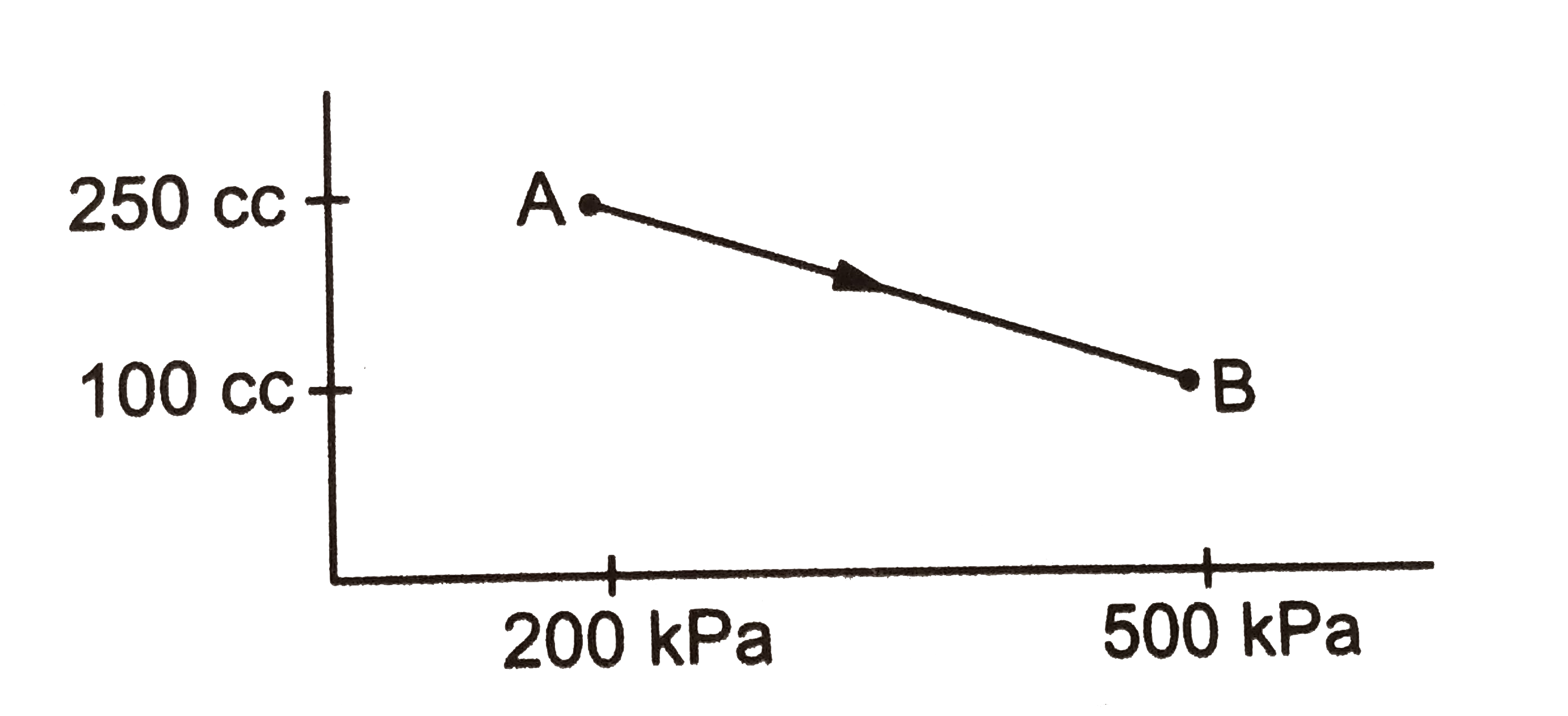 View Solution
View SolutionFig. shows the variation of internal energy (U) with the pressure (P) of 2.0 mole gas in cycle process abcda . The temperatures of gas at c and d are 300 and 500 K , respectively. Calculate the heat absorbed by the gas during the process.
03:38View SolutionTwo moles of helium gas are taken along the path ABCD (as shown in Fig.) The work done by the gas is
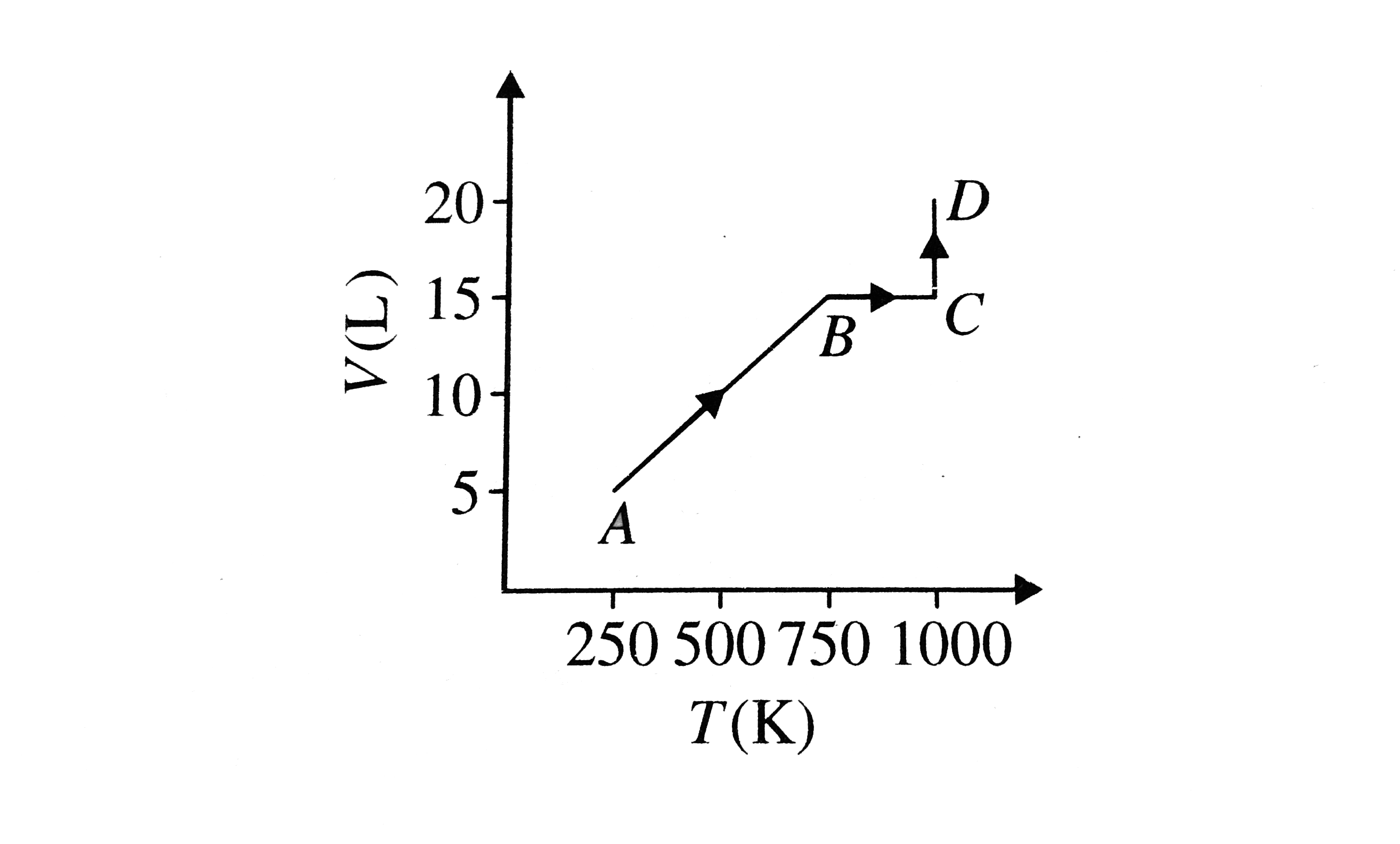 03:50View Solution
03:50View SolutionIn following figs. Variation of volume by change of pressure is shown in Fig. A gas is taken along the path ABCDA . The change in internal energy of the tgas will be:
03:52View SolutionIn the diagrams (i) to (iv) of variation of volume with changing pressure is shown. A gas is taken along the path ABCD . The change in internal energy of the gas will be
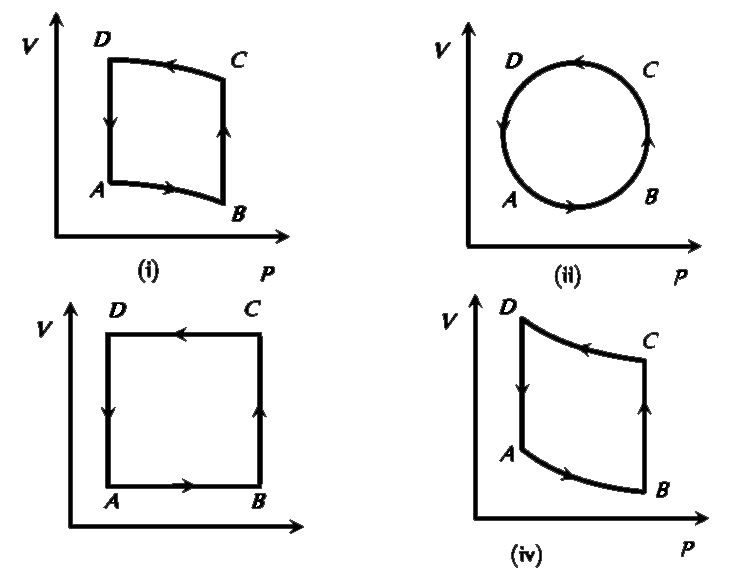 03:30View Solution
03:30View SolutionA mono-atomic gas is taken along path AB as shown. Calculate change in internal energy of the gas.
03:31View SolutionOne mole of an ideal diatomic gas undergoes a transition from A to B along a path AB as shown in fig. The change in internal energy of the gas during the transition is (gamma =3/5)
06:16View SolutionOne mole of an ideal gas is taken from A to B , from B to C and then back to A . The variation of its volume with the temperature for that change is as shown . Its pressure at A is P_(0) , volume is V_(0) . Then , the internal energy .
01:24View SolutionA gas is taken along the path AB as shown in fig, if 70 cal of heat is extracted from the gas in the process, calculate the change in the internal energy of the system.
 02:01View Solution
02:01View SolutionIn following figs. Variation of volume by change of pressure is shown in Fig. A gas is taken along the path ABCDA . The change in internal energy of the gas will be:
03:18View SolutionA sample of an ideal gas is taken through the cyclic process abca and shown in the figure. The change in the internal energy of the gas along the path ca is -180J . The gas absorbs 250J of heat along the path ab and 60 J along the path bc. the work done by the gas along the path abc is:
03:10View Solutionचित्र (i) से (iv) में दाब में परिवर्तन के साथ आयतन परिवर्तनदर्शाया गया है। एक गैस को पथ ABCDA के अनुदिश ले जाया जाता है। गैस की आन्तरिक ऊर्जा में परिवर्तन है :
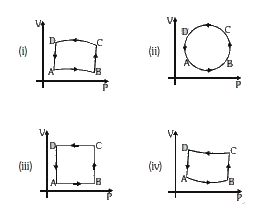 02:07View Solution
02:07View Solution

